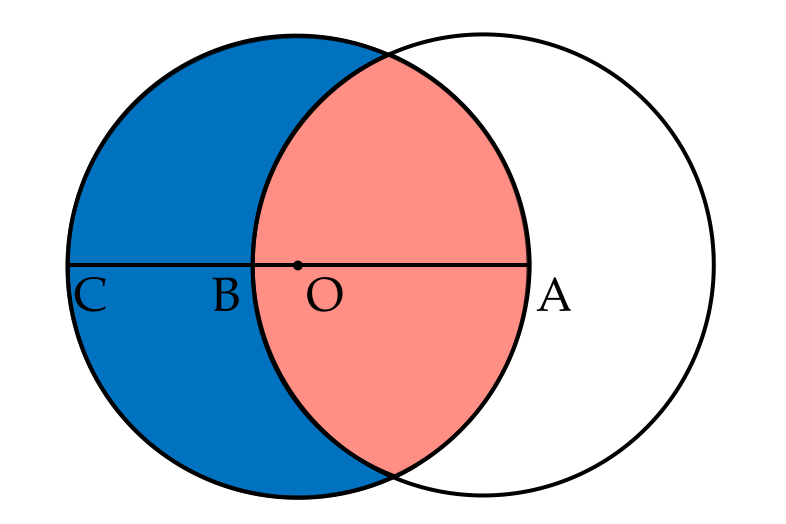Circle The Ratio
Consider 2 overlapping congruent circles, the area formed by the overlap area shown in red is equal to the remaining area shown in blue. If O is the centre of the circle, and A, O, B and C are colinear points
Then find

No vote yet
1 vote
Easy Math Editor
This discussion board is a place to discuss our Daily Challenges and the math and science related to those challenges. Explanations are more than just a solution — they should explain the steps and thinking strategies that you used to obtain the solution. Comments should further the discussion of math and science.
When posting on Brilliant:
*italics*or_italics_**bold**or__bold__paragraph 1
paragraph 2
[example link](https://brilliant.org)> This is a quote# I indented these lines # 4 spaces, and now they show # up as a code block. print "hello world"\(...\)or\[...\]to ensure proper formatting.2 \times 32^{34}a_{i-1}\frac{2}{3}\sqrt{2}\sum_{i=1}^3\sin \theta\boxed{123}Comments
Let D and F be the points of intersection of the circle, let E be the intersection of AB and DF, let r be the radii of each circle, and let θ=∠DOF.
Then the area of sector ODAF is AODAF=21r2θ and the area of △ODF is A△ODF=21r2sinθ, so the difference between them is 21r2(θ−sinθ), which makes the area of the red region twice that much or Ared=r2(θ−sinθ). Since the red region and the blue region make a circle and the red region and the blue region are the same, the area of the red region is also the area of half the circle or Ared=21πr2. Therefore, Ared=r2(θ−sinθ)=21πr2 or 2θ−2sinθ=π which solves numerically to θ≈2.3098815.
By trigonometry on △OED, OE=rcos21θ, which means AB=2r−2OE=2r−2rcos21θ. Since AC=2r, ACAB=2r2r−2rcos21θ=1−cos21θ. With θ≈2.3098815, this makes the ratio ACAB≈0.596027265.
This would be a good problem for the geometry or calculus section
It's very elegant indeed, and I'm surprised I never saw it before, so simple to formulate it is. But I'm not seeing any analytical or exact solution to it. The best I can get so far is an equation mixing angles and cosines, which I'm not seeing how to solve unless through numeric methods. I'll think more on it, later.
Hi sir how you r editing the fig which software